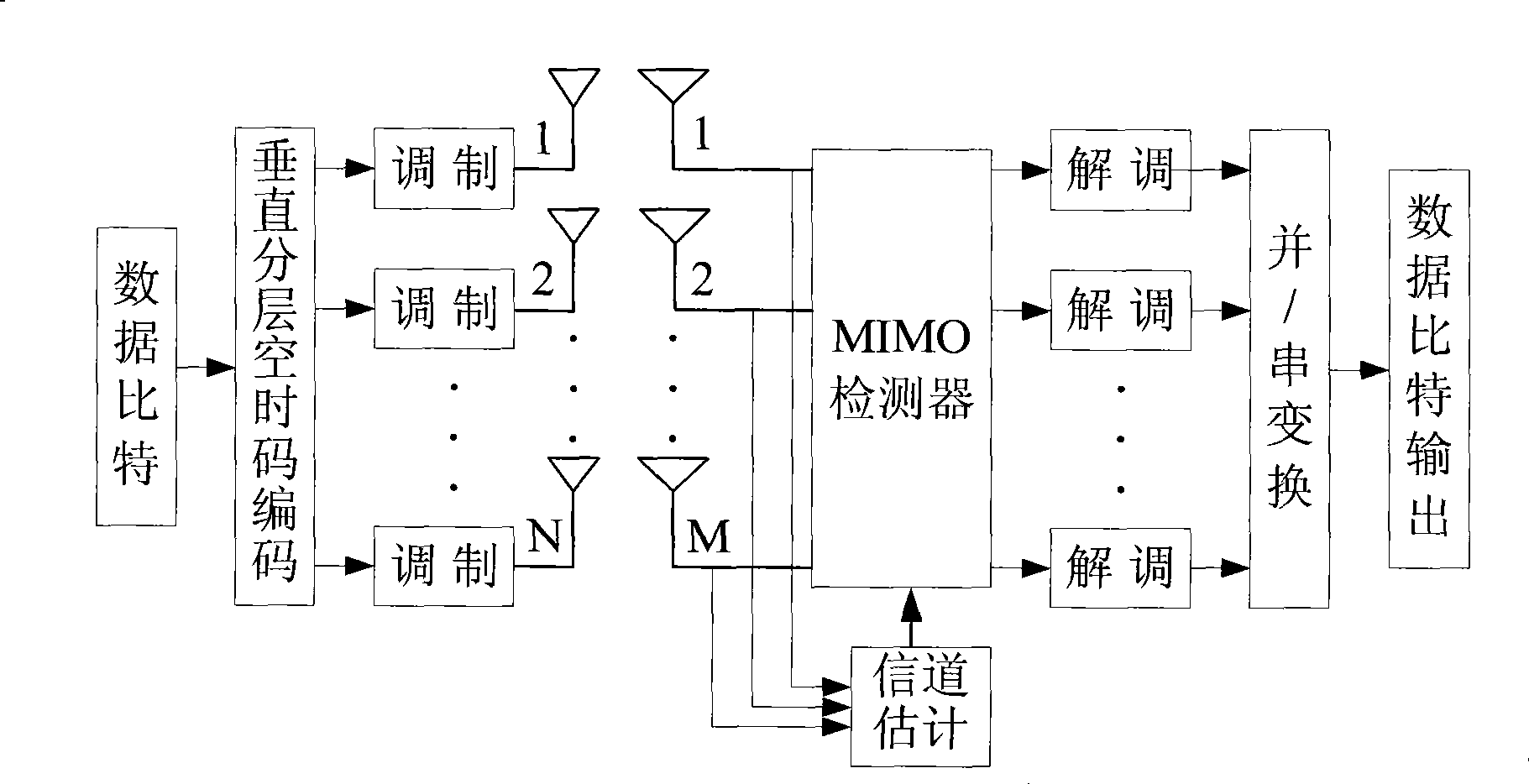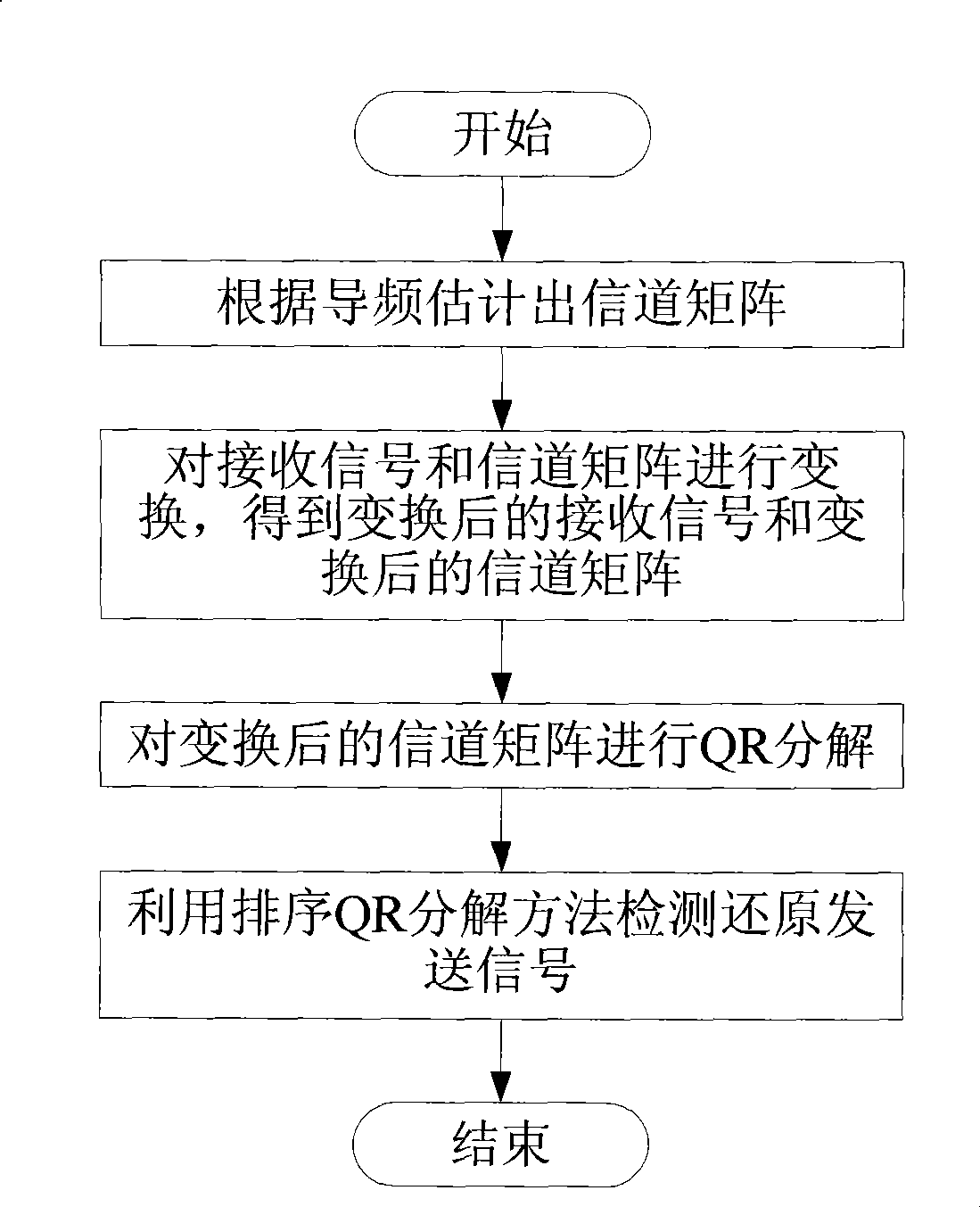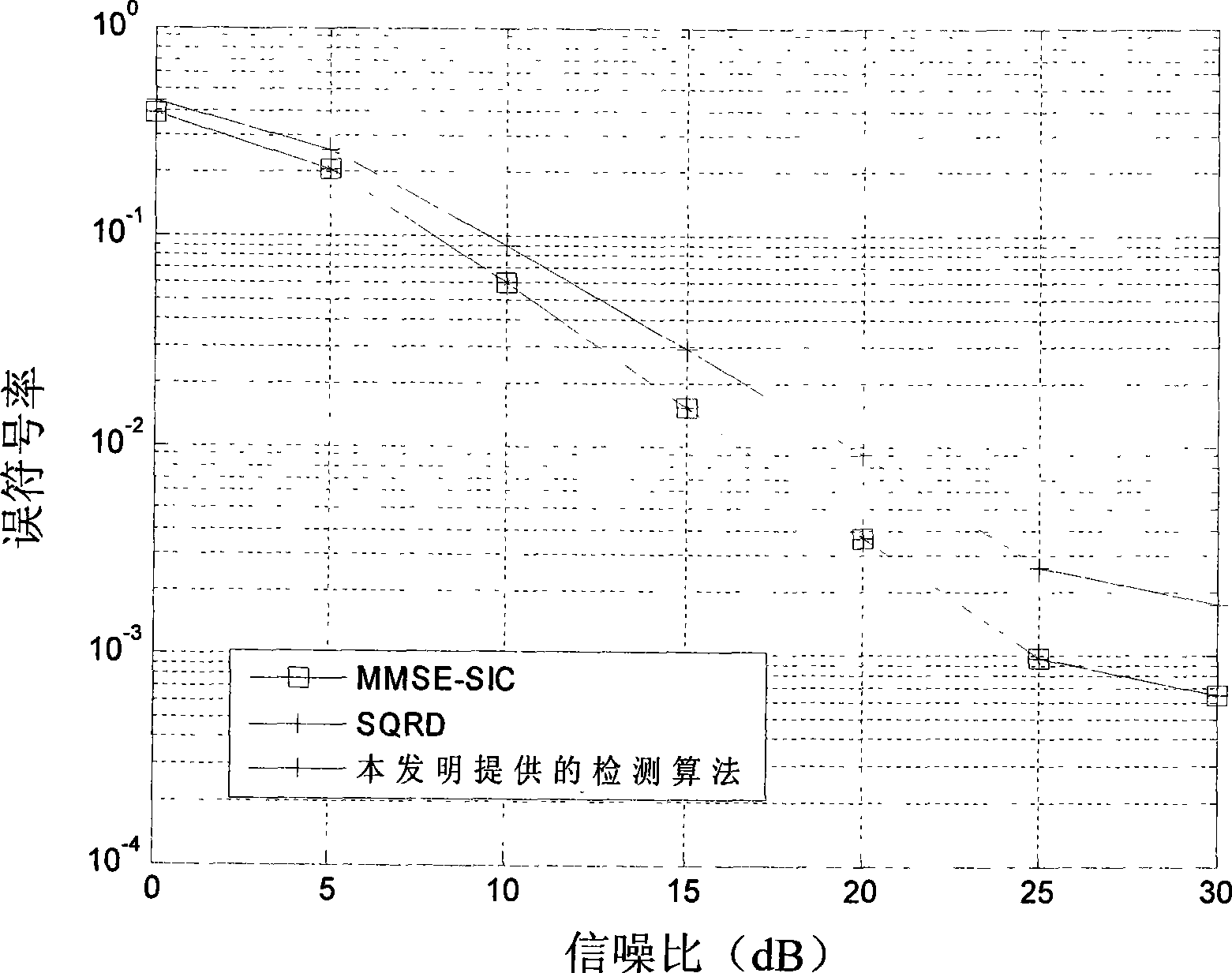Method for detecting receive signal of multi-input multi-output system and detector thereof
A technology for receiving signals and detecting methods, which is applied in the field of detectors and can solve problems such as poor performance
- Summary
- Abstract
- Description
- Claims
- Application Information
AI Technical Summary
Problems solved by technology
Method used
Image
Examples
Embodiment Construction
[0033] The technical solution of the present invention will be described in more detail below with reference to the drawings and embodiments.
[0034] The invention provides a detection method and a detector for receiving signals in a MIMO system, and the method and detector are applicable to other communication systems that can be modeled as MIMO.
[0035] figure 1 is the basic principle block diagram of the MIMO system, the number of transmitting antennas is N, and the number of receiving antennas is M. At the transmitting end, the high-speed data bit stream is serially converted into N low-speed data streams, and each data bit stream is modulated and transmitted from different antennas at the same time; after the wireless channel fades, the signals and noises from different transmitting antennas are superimposed After being received by multiple antennas at the same time, the MIMO detector uses the channel state information generated by the channel estimation module to reco...
PUM
 Login to View More
Login to View More Abstract
Description
Claims
Application Information
 Login to View More
Login to View More - R&D
- Intellectual Property
- Life Sciences
- Materials
- Tech Scout
- Unparalleled Data Quality
- Higher Quality Content
- 60% Fewer Hallucinations
Browse by: Latest US Patents, China's latest patents, Technical Efficacy Thesaurus, Application Domain, Technology Topic, Popular Technical Reports.
© 2025 PatSnap. All rights reserved.Legal|Privacy policy|Modern Slavery Act Transparency Statement|Sitemap|About US| Contact US: help@patsnap.com



